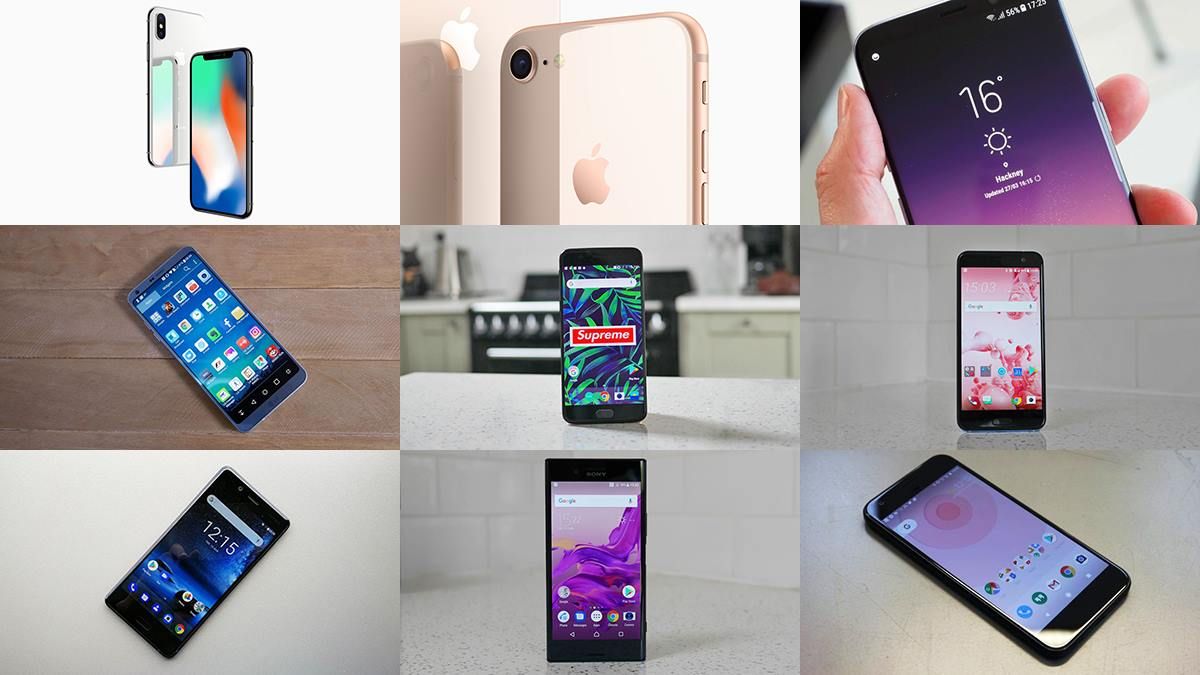

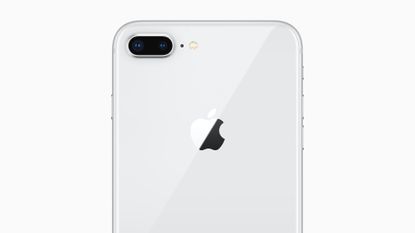
Introduction
What’s bigger than an iPhone 8 Plus? Bigger than the backsides Sir Mix-A-Lot loves so much? Bigger than something really big? That’s right: our big smartphone smackdown, which pits Apple’s latest against the brightest and best Android devices. Welcome to a world of big screens, awesome cameras and truly terrifying price tags as we work out who should wear the smartphone crown.
Want more details on the devices competing in this battle? Check it:
What we think of Apple's new iPhone X
The iPhone X has no home button - here's how to navigate with gestures
The iPhone 8 and 8 Plus specs, features, release date and more
Galaxy S8 review: Samsung's latest is a truly sublime smartphone
LG G6 review: a great gimmick-free smartphone
OnePlus 5: the coolest Android phone you can buy
HTC U11 review: a colour changing phone you'll want to squeeze
Hands on Nokia 8 review: Is this the Nokia flagship we've been waiting for?
Sony Xperia XZ Premium review: a proper flagship from Sony
Google Pixel Review: is Google's first smartphone Pixel perfect?
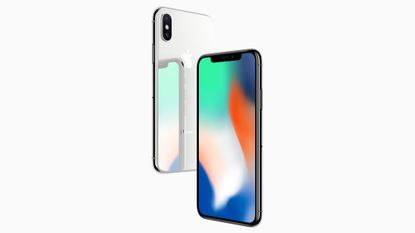
Design
The iPhone 8 looks like an iPhone 7 recast in glass, and that’s effectively what it is. The iPhone X is much prettier, with a screen that’s almost entirely devoted to the display, the Touch ID sensor dropped in favour of facial recognition. It’s gorgeous.
The Galaxy S8 is another genuinely beautiful phone, its Infinity Display almost eradicating bezels in favour of curved glass. That means a bigger screen without a bigger phone, and it’s the best-looking Galaxy to date.
The modular approach of the LG G5 has gone, replaced with a more conservative design that mixes glass and metal to good effect. The bezels are smaller than before, but there’s no trace of the design oddness that characterised previous LGs.
OnePlus made its name with good, cheap handsets, and while the OnePlus 5 is a lot cheaper than its rivals it doesn’t look like it. It’s the same anodised aluminium as previous handsets, but it looks better and slimmer than before.
HTC offers “liquid glass”, which appears to change colour as you move the phone, and you can activate certain tasks by squeezing the sides. The colours are fun but the big-bezel design looks dated already.
Nokia’s new flagship is a lot of fun with tiny bezels, a smart look and the option of amusing colours such as shiny copper and blue.
Sony’s in a bit of a rut when it comes to phone design: the Premium looks like pretty much every other Xperia and music player the firm’s made in the last several years. It looks best in black where the large top and bottom bezels don’t look quite so large.
Google has given the Pixel a metal body with a glass cover for the rear camera and fingerprint scanner, which looks less premium than we’re sure Google intended. It’s plain rather than pretty.
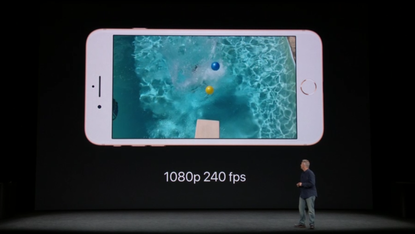
Display
The iPhone 8 sticks with the same Retina display as the iPhone 7, albeit with true tone technology to adjust colour according to ambient lighting. But the iPhone X gets a 5.8-inch “Super Retina” OLED display with 1,000,000:1 contrast, wide colour gamut and accurate colour. Resolution is 2436 x 1125.
Samsung’s Galaxy S8 has a 5.8-inch WQHD+ display capable of 2960 x 1440, although the default setting is 2220 x 1080. It offers Samsung’s Always On, which takes advantage of OLED’s ability to light individual pixels to display information when the rest of the display is off.
LG has opted for a 5.7-inch display but given it an unusual aspect ratio: 18:9 rather than the more common 16:9, delivering a resolution of 2880 x 1440. That allows rounded corners that look best on black models, but sometimes means letterboxing of apps. Oddly, LG has chosen an IPS LCD rather than OLED. It’s a nice display with support for Dolby Vision HDR.
The OnePlus 5 has a 5.5-inch AMOLED display delivering 401ppi at 1080 x 1920 resolution. It lacks the pixels of more expensive rivals but it’s a typically vivid AMOLED and great for video.
The HTC has a 5.5-inch QHD (2560 x 1440) display which is crisp and clear, if a little less bright than its rivals.
The Nokia comes with a 5.3-inch quad HD (2560 x 1440) display and it’s brighter than most, which is handy if you’ll be using it in sunlight.
Sony’s display is gorgeous, 5.46 inches delivering 3,840 x 2160 pixels at a whopping 807ppi. You can’t reduce the resolution to save energy, but you won’t want to: while it’s an LCD rather than an AMOLED, Sony’s worked its Bravia magic to make the Xperia screen one of the very best you’ve ever seen in a phone.
Google’s Pixel has a 5.0-inch display delivering 1920 x 1080 pixels at 441ppi.
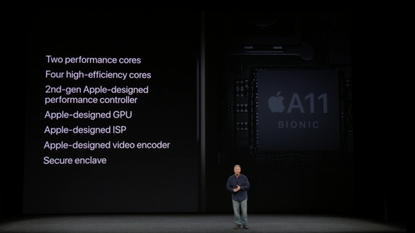
Processor, memory and storage
We haven’t seen the iPhone 8 or iPhone X benchmarked yet, but the A10X Fusion processor in the iPad Pro is scoring a whopping 9207 on GeekBench: it’s a very, very fast processor and the A11 Bionic Processor in the new iPhones is likely to be faster still. Apple has also improved its GPU, with an Apple-designed model offering 30% better performance than before. Storage has been simplified, with a choice of 64GB or 256GB.
For the Galaxy S8, US and China models have a Qualcomm Snapdragon 835 with Adreno 540 GPU, while the rest of the world gets the even faster Exynos 8895 Octa processor. That’s currently scoring 6495 in GeekBench tests. 4GB of RAM and 64GB of storage are standard.
LG is using an older chipset, the Snapdragon 821, the same as you’ll find in Google’s Pixel. It’s teamed with 4GB of RAM, benchmarks at 4223 in GeekBench and has 32GB of internal storage with the obligatory card slot.
OnePlus has linked capacity with colour, so the Slate Grey model has 64GB of storage and 6GB of RAM while the more expensive Midnight Black has 128GB/8GB. Both models are powered by a Qualcomm Snapdragon 835, which benchmarks at 6716. That makes the Midnight Black model the fastest phone here.
The HTC has a Snapdragon 835 with 4GB of RAM, and its GeekBench score of 6312 is up there with the very fastest smartphones. It’s available with 64GB or 128GB of storage.
Nokia’s phone as 64GB of storage, 4GB of RAM and a Snapdragon 835 processor. GeekBench scores aren’t available yet.
The Xperia has 64GB of internal storage and a card slot for adding more, with a Snapdragon 835 processor and 4GB of RAM scoring 5824 in GeekBench.
The Pixel has a Snapdragon 821 processor and 4GB of RAM, coming in at 4494 on GeekBench. It’s available with 32 or 128GB of storage and there’s no microSD card slot.
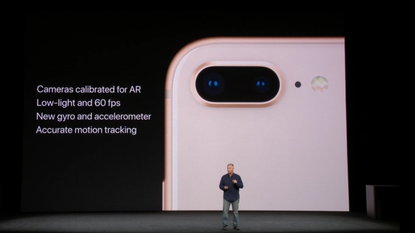
Camera
Apple has reengineered its cameras for augmented reality apps, with a new sensor that’s considerably more energy efficient than before. The iPhone 8 gets a single 12MP camera but the iPhone X gets twin 12MP cameras with f/1.8 and f/2.4 aperture and quad-LED true tone flash. The front-facing camera supports Portrait Mode and the imminent Portrait Lighting feature, which you can use to effectively retake photos with different kinds of lighting.
The camera setup in the Galaxy S8 is superb. Rather than go down the dual-lens route Samsung has instead concentrated on making it easier to shoot great photos. The results are up there with the very best, although the software does have a tendency to overexpose some shots.
LG has gone for a dual 13MP camera setup, which enables it to offer two fields of view: 70 degrees and 125 degrees, both with optical image stabilisation. The results are very good, if not quite up there with the very best.
OnePlus has been criticised for its cameras in the past, but not this time: the OnePlus 5 has two Sony sensors in the rear camera, one 16MP one and one 20MP telephoto one. That makes zoom quality much better as well as offer an SLR-style portrait mode.
The HTC has just one lens unlike previous HTC flagships - an odd move when rivals are now following HTC’s lead. It’s a 12MP camera with very good HDR performance, lots of professional options and even RAW mode capturing.
Nokia has teamed up with camera legends Carl Zeiss for its camera, and the combination of both front and rear facing 13MP cameras enables you to record you and what’s around you at the same time. The rear camera also has a second monochrome lens to improve things in low light, but the shots are less involving than ones from Apple, Sony or Samsung. Built-in livestreaming to Facebook or YouTube is a nice touch if you’re into that kind of thing.
Sony makes great cameras and it’s put one in the Xperia. It’s a 19MP model with electronic image stablisation and super slow motion at 960fps. It performs perfectly well in Intelligent Auto mode but there’s a good Manual Mode too. It’s one of the very best smartphone cameras around.
The Pixel’s camera is a single lens 12.3 megapixel model with software lens blur and few options for pros to mess around with. It’s good for everyday snapping but pales in comparison to the likes of Samsung and Apple.
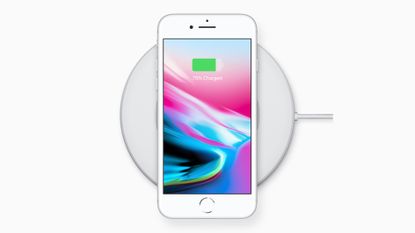
Battery and charging
Wireless charging comes to iPhones at last, with both models supporting Qi wireless charging and a multi-device charger, the AirPower, coming in the not too distant future. We don’t have battery specs yet but Apple says the iPhone X lasts 2 hours longer than the iPhone 7, which generally managed to get through the day without running out of power.
The Galaxy S8 has a 3,000 mAh battery with fast charging and optional wireless charging.
Outside the US, the LG doesn’t support wireless charging - but its 3,300mAh battery is big enough to cope with demanding days and it supports Quick Charge 3.0.
OnePlus has fitted a 3,300mAh battery to the OnePlus 5 and has Dash Charge, its version of fast charging. There’s also a very restrictive battery saving mode for when you’re running low.
The HTC has a 3,000 mAh battery and its own Boost+ system to learn your habits and optimise battery life accordingly, so for example it runs some apps with fewer pixels to save energy. Charging is via the USB port.
Nokia has plumped for a 3,090 mAh battery with liquid cooling, Quick Charge 3.0 and USB-C.
Sony’s flagship has a 3,230 mAh battery, which is quite large and copes happily with action-packed days thanks to two distinct power saving modes. It has a Quick Charge 3.0 charger for speedy top-ups.
The Pixel’s battery is small in this company: it’s 2,770 mAh, and it has a tendency to run out of puff on more demanding days, although it does ship with a fast charger that can give you seven hours of power in about 15 minutes.
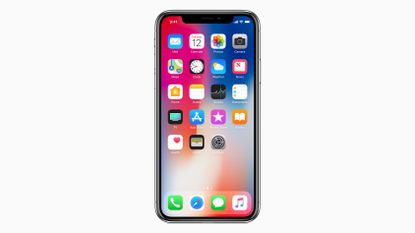
Software
Both iPhones come with iOS 11, the newest version of Apple’s mobile OS, but it’s better on the iPhone X: it uses facial recognition and tracking not just to unlock the phone but to authenticate Apple Pay payments and in apps such as SnapChat. Fancy being the actor in your own animated movie? The iPhone X offers that potential.
Samsung ships the Galaxy with a revamped version of its TouchWiz user interface on top of Android Nougat and Bixby, its rival to Apple’s Siri. It also has Bluetooth 5, which enables you to pair headphones and sync their volume controls with the phone and offers dual speaker support for wireless speakers.
LG has revamped its user interface to take account of that bigger screen, with many apps using a “double square” approach to show two square sections at a time - although it’s only really useful in the camera app. Everything sits atop a lightly reskinned Android Nougat.
OnePlus uses its own OxygenOS interface on top of Android Nougat, and it doesn’t meddle with the design as much as, say, Samsung does. It looks good and works well.
As ever HTC brings its Sense interface to stock Android Nougat, and it also offers Sense Companion, an AI app that tries to be helpful by analysing your calendar, checking the weather forecast, learning what apps you use when and so on.
Nokia has been criticised for some of its apps, notably the camera app, whose interface is rather clunky. The main OS is stock Android Nougat.
Sony offers the usual dark version of Android, this time on Nougat, and as ever it puts a whole bunch of Sony apps in there too - some of which duplicate Google apps for email and music.
As you’d expect from Google, the Pixel runs stock Android Nougat and offers Google Assistant, the rebranded Google Now that promises to make your life easier.
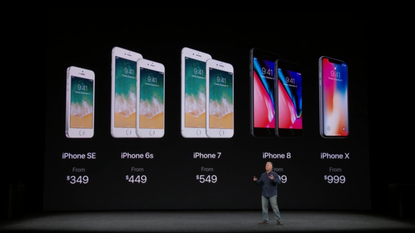
Price
The iPhone X has the highest entry price of any iPhone at $999, with the iPhone 8 coming in at a slightly less frightening $699.
SIM-free Galaxy S8s start at £639 / $724.99 / AU$1,199.
The LG G6 has dropped in price since launch, and is now available for around $550/£580/AU$1000 SIM-free.
The OnePlus 5 starts at $479 / £449 / AU$599.
The HTC is $649 / $649 / AU$999.
Nokia’s 8 is €599 / AU$899, which should equate to £550 / $700.
In the UK the Sony Xperia XZ Premium is £649. It’s $799 in the US and AU$1,100 in Australia.
US customers can pick up a Pixel for as little as $524. Elsewhere it’s £599 / AU$1,229.
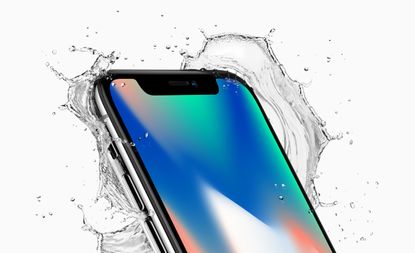
Early verdict
The iPhone X is clearly the most expensive phone here, but it’s also the fastest and its augmented reality and face tracking are genuinely innovative. Give it a year and you’ll get the same features in lesser iPhones, but for now if you want to be at the cutting edge of smartphone tech then you’ll need to pay a lot for it.
All of the phones we’ve detailed here are very strong performers in their own right, but while we’d put the Galaxy S8 as the best Android rival to the iPhone X it’s not the phone we’d pick as the best of the bunch. That honour goes to the OnePlus 5, which offers a great deal of bang for relatively few bucks. It’s less than half the price of the iPhone X, but that doesn’t mean it’s half the phone.
Sign up to the T3 newsletter for smarter living straight to your inbox
Get all the latest news, reviews, deals and buying guides on gorgeous tech, home and active products from the T3 experts
Writer, musician and broadcaster Carrie Marshall has been covering technology since 1998 and is particularly interested in how tech can help us live our best lives. Her CV is a who’s who of magazines, newspapers, websites and radio programmes ranging from T3, Techradar and MacFormat to the BBC, Sunday Post and People’s Friend. Carrie has written more than a dozen books, ghost-wrote two more and co-wrote seven more books and a Radio 2 documentary series; her memoir, Carrie Kills A Man, was shortlisted for the British Book Awards. When she’s not scribbling, Carrie is the singer in Glaswegian rock band Unquiet Mind (unquietmindmusic).
-
 When’s the best time to take creatine?
When’s the best time to take creatine?The science-backed supplement is a must for building strength and muscle, but is there an optimal time to take it?
By Bryony Firth-Bernard Published
-
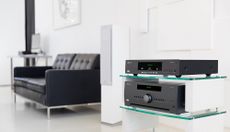 Arcam pushes important performance upgrades to a huge selection of devices
Arcam pushes important performance upgrades to a huge selection of devicesArcam delivers updates to its AV receivers and some Hi-Fi components too
By Carrie Marshall Published
